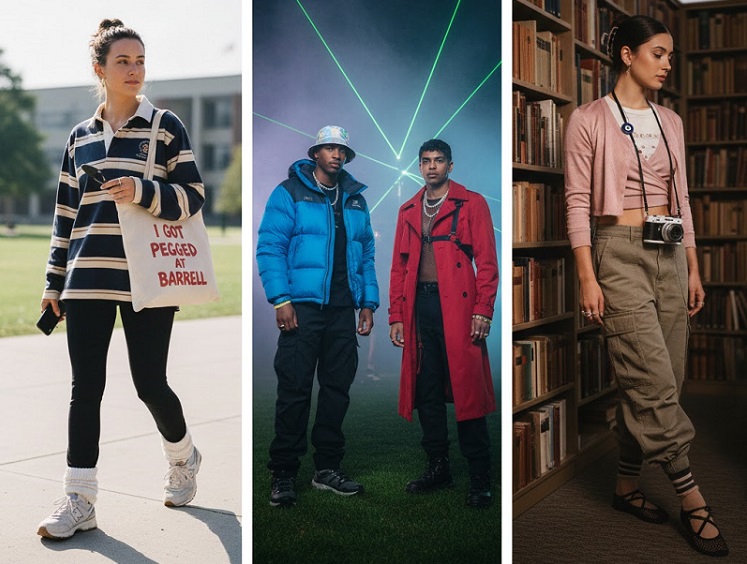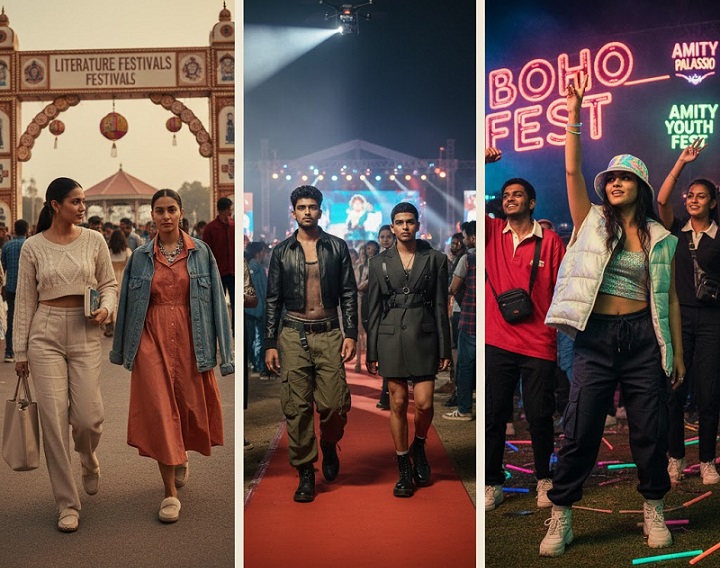Lucknow: India has the potential to become the next fashion capital, thanks to its rich cultural heritage, growing influence in global fashion, and dynamic fashion industry. While cities like Paris, Milan, New York, and London currently dominate the fashion world, India is steadily making its mark. Here’s a closer look at the factors that could propel India to fashion capital status:
1. Rich Cultural Heritage and Craftsmanship
- Diverse Textiles and Techniques: India is home to a wide array of textiles and artisanal techniques, from Chikankari in Lucknow to Banarasi weaving in Varanasi, and from Kanjivaram silk in Tamil Nadu to Pashmina in Kashmir. These traditional crafts provide a deep reservoir of inspiration and material for fashion designers.
- Global Appeal of Indian Crafts: Indian craftsmanship has been increasingly embraced by global fashion houses. For instance, Sabyasachi Mukherjee’s designs have been worn by international celebrities, and Indian textiles have been featured in collections by designers like Anita Dongre and Manish Arora. This global recognition positions India as a unique source of both traditional and contemporary fashion.
2. Emerging Fashion Cities
- Mumbai and Delhi as Fashion Hubs: Mumbai and Delhi are the primary fashion hubs in India, hosting prestigious events like Lakmé Fashion Week and India Couture Week. These cities attract top designers, models, and fashion enthusiasts, and are home to many high-end fashion boutiques and international brands.
- Growing Influence of Other Cities: Other cities like Bangalore, Kolkata, and Jaipur are also emerging as important fashion centers. Bangalore’s cosmopolitan culture, Kolkata’s rich history, and Jaipur’s focus on traditional crafts contribute to India’s diverse fashion scene.
3. Strong Educational Infrastructure
- Fashion Institutes: India has some of the world’s leading fashion institutes, such as the National Institute of Fashion Technology (NIFT) and the National Institute of Design (NID). These institutions produce a steady stream of talented designers who are making waves both in India and internationally.
- Collaboration with International Schools: Indian fashion schools often collaborate with international institutions, allowing for a cross-pollination of ideas and trends. This global perspective enhances the creativity and innovation seen in Indian fashion.
4. Innovative Designers and Brands
- Leading Indian Designers: Designers like Sabyasachi Mukherjee, Manish Malhotra, Tarun Tahiliani, and Ritu Kumar have become household names not only in India but across the world. Their ability to blend traditional Indian aesthetics with contemporary design has earned them international acclaim.
- Growing Influence of Indian Brands: Indian fashion brands are gaining traction globally. Brands like Fabindia, Anita Dongre’s Grassroot, and Raw Mango are being celebrated for their focus on sustainability, ethical production, and the use of traditional crafts. This positions India as a leader in the global movement towards more conscious fashion.
5. Rising Global Influence
- Bollywood and Celebrity Influence: Bollywood has a significant impact on fashion trends in India. Indian celebrities are often seen wearing Indian designers on international red carpets, bringing global attention to Indian fashion. For example, Deepika Padukone’s appearances at the Cannes Film Festival in Sabyasachi outfits have highlighted Indian couture on a global stage.
- India’s Expanding Fashion Media: Indian fashion magazines like Vogue India and Elle India are gaining international readership, further amplifying the country’s fashion influence. These publications showcase the best of Indian fashion, introducing it to a global audience.
6. Sustainability and Ethical Fashion
- Focus on Sustainable Fashion: The global fashion industry is increasingly leaning towards sustainability, and India’s traditional crafts, which are often sustainable by nature, are gaining importance. Indian designers are also at the forefront of the slow fashion movement, which emphasizes quality, sustainability, and ethical production.
- Ethical Production Practices: Many Indian brands are committed to fair trade and ethical production practices, which resonate with a growing global consumer base that values transparency and sustainability. This commitment enhances India’s reputation as a responsible fashion leader.
7. Government and Industry Support
- Government Initiatives: The Indian government has launched various initiatives to support the textile and fashion industries, such as the Textile Ministry’s promotion of handloom and handicrafts. These initiatives help preserve traditional crafts while promoting them on a global scale.
- Industry Collaborations: Indian fashion councils and organizations, such as the Fashion Design Council of India (FDCI), play a crucial role in promoting Indian fashion through events, workshops, and collaborations with international fashion bodies. This support structure is essential for nurturing talent and providing platforms for designers to showcase their work.
8. Consumer Market Potential
- Growing Middle Class: India’s expanding middle class with increasing disposable income is fueling demand for fashion, from high-street brands to luxury labels. This robust consumer market provides a solid foundation for the growth of the fashion industry.
- Youth Influence: India’s young population is highly fashion-conscious and digitally savvy, driving trends through social media platforms like Instagram. This demographic’s influence on fashion trends, both locally and globally, cannot be underestimated.
9. Challenges and Considerations
- Infrastructure and Logistics: To become a true fashion capital, India needs to address infrastructure and logistical challenges. Efficient supply chains, reliable transportation, and advanced technology are necessary to support the fast-paced demands of the global fashion industry.
- International Competition: While India has a rich fashion heritage, it faces stiff competition from established fashion capitals. To stand out, India must continue to innovate and push boundaries while preserving its unique cultural identity.
India has all the ingredients necessary to become the next fashion capital: a rich cultural heritage, innovative designers, strong educational infrastructure, and a growing influence on the global stage. As the world increasingly values sustainability, ethical production, and cultural authenticity, India’s fashion industry is well-positioned to lead these movements. With continued support from the government, industry stakeholders, and consumers, India can indeed rise to join the ranks of the world’s most influential fashion capitals.






